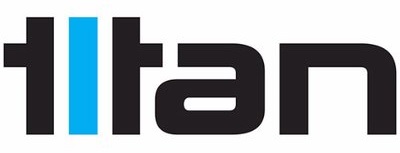 Add My Company
Add My Company
Sign In
WHAT MAKES A GOOD PRODUCT DESIGN?
25-03-2020

Drawing upon over 40 years of experience of management and new product development I have become a great believer in keeping things as simple as possible but this philosophy in itself can cause problems. Recently I was pushing the Titan development team to reduce the number of components in a new product to decrease manufacturing costs inventory and create a speedier flow meter assembly. This led us down a very protracted development route which delayed the product launch. Some of these cost reductions were beneficial but sometimes we ended up with a similar configuration to the initial design but with months lost trying to solve problems created by the newly introduced ideas. Nevertheless, I actively encourage exploring new ideas: we all learn even from mistakes and several of the greatest inventions of all time have been the results of an accident or an erroneous test, so you never quite know where something new may take you! Post-it notes are a perfect example of this where the development of an apparently useless, weak, pressure sensitive adhesive found an application that had not existed before. How good is good enough? When to stop developing a product is usually a commercial decision. Have the design criteria been met? Yes – well let’s now make it a product. However, a product designer will often say, but we can make it better. It takes a commercial head to say stop now and productionise it! For instance, we could very easily make a very low-cost ultrasonic meter accurate to 5% with a ten or twenty to one flow range. But it would have low repeatability and a very poor temperature coefficient and no flexibility in its usefulness. Consequently, it would be only a little better than a full/empty pipe indicator. Our design philosophy at Titan is we prefer to put development time into new products that will remain accurate and reliable. However, design criteria for OEM flowmeter developments are completely different. Here we have a design specification to achieve and the customer has the devices manufactured by us in their name and their logo on the box. Is the Keeping It Simple design philosophy always the best? Keeping it simple product design is often a sound strategy unless the application is critical and some redundancy is paramount in the system for safety reasons. Extra features are lovely but how many of us use all our smart-phones capabilities? Like the smart phone we are constantly producing more features for our electronic products to aid use, help solve unforeseen problems or aid trouble shooting. They are progressively becoming more complicated and edging away from the basic reasons for their original development. The basic product design, however, started simple the further development has intruded the more complicated functions. Get the basics right, with a mind on future development, and then add features; don’t start with a list of features and then struggle to attain them all. If it is not broken don’t try to fix it! This is nearly always a good place to start a product development. When faced with a blank sheet of paper and total free reign let your ideas pour out but do not be afraid to back-off and introduce well tried and tested elements. The new ideas are always worth exploring and, in my opinion, should not be dismissed out of hand. The smallest design detail can make a big difference to a products production and lifespan and should be given due consideration. I have found that “sweating the small stuff” is a good route to a reliable overall product. Do not dismiss the details as secondary to the whole job. A real life example The VW Beetle is perhaps a suitable example of excellent product design principles. The combination of production techniques and simplified processes make it a design classic. It is not hard to service and remains reliable even when poorly maintained in harsh conditions and on the odd occasion is does go wrong it is very easy to repair. Examples have been used in the arctic and the desert it has proven itself to be truly ubiquitous being re-configured into a host of other vehicle types. It utilises inherent strength in pressed steel and a simple design philosophy to great advantage. It may not be the first choice for a car enthusiast as the drive is coarse and noisy but over twenty million have been produced over its sixty-year manufacturing period so people wallets have done the talking. Some features where interpretations of existing reliable parts of other vehicle ideas so it is in effect not a new design but simply the best parts of other products all brought together in a package with innovative features. This does not take anything away from Ferdinand Porche or the design team involved spotting and using good ideas is to be celebrated, don’t re-invent the wheel! During the Second World War its production was rejected by Citroen and after the war Rootes in England and Ford in America also dismissed the car as being out of tune with modern times. This one product encapsulates all three of the points I made at the start. It is more than good enough, it is very simple and the fundamental design criteria have been brought forward into modern versions of the same device. Further Information To review our capabilities for creating bespoke flowmeter system designs perfectly matched to your application please visit www.flowmeters.co.uk or contact Titan Enterprises on +44-1935-812790 / trevor@flowmeters.co.uk.
For more information on WHAT MAKES A GOOD PRODUCT DESIGN? talk to Titan Enterprises
Enquire Now
More News
List your company on FindTheNeedle.

